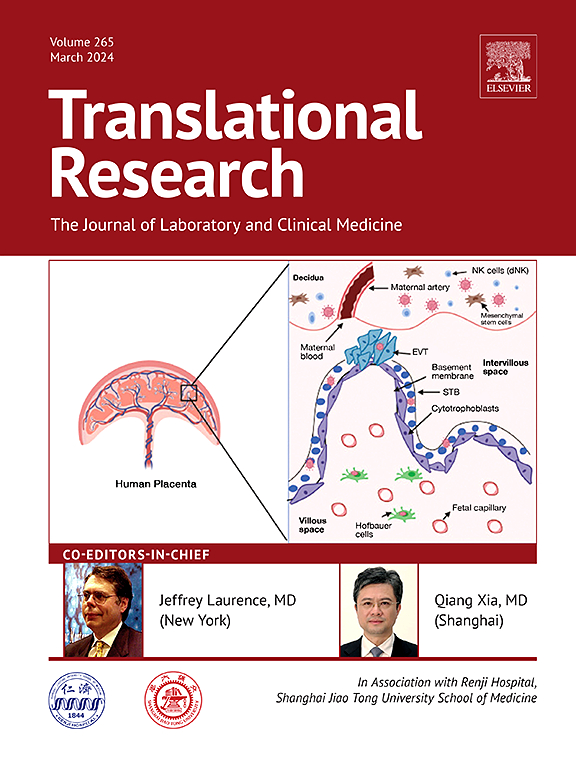在儿科猪中,体外循环与深度低温循环停止导致器官特异性转录组反应。
IF 5.9
2区 医学
Q1 MEDICAL LABORATORY TECHNOLOGY
引用次数: 0
摘要
心脏手术伴体外循环(CPB)的器官水平分子反应尚不充分,可能存在异质性。在这里,我们测量了CPB仔猪模型中深度低温循环停止(DHCA)的器官特异性基因表达。分离CPB后,仔猪进行外周CPB, DHCA 75min,重症监护6h。用机械通气的动物作为对照。组织取自肺、肾、肝、心和回肠。使用NovaSeq 6000进行RNA测序,并通过差异表达基因(DEG)和途径/网络分析进行评估。CPB/DHCA诱导了显著的转录组改变,与肺(410个)和回肠(11个)相比,肝脏(2192个)、心脏(777个)和肾脏(1774个)的变化更大,各器官之间的重叠很少(1个)。关键的上调系统包括肝脏的核糖体增殖和线粒体组装,肾脏的氧化应激反应和近端小管修复,心脏的肌丝结构基因和促肥厚通路,以及肺的溶质通道和精氨酸代谢。适应性免疫基因下调发生在多个器官。转录组学可以为心脏手术后靶向治疗和不良事件筛查的研究提供信息。本文章由计算机程序翻译,如有差异,请以英文原文为准。
Cardiopulmonary bypass with deep hypothermic circulatory arrest results in organ-specific transcriptomic responses in pediatric swine
The organ-level molecular response to cardiac surgery with cardiopulmonary bypass (CPB) remains inadequately understood and may be heterogeneous. Here, we measured organ-specific gene expression in a piglet model of CPB with deep hypothermic circulatory arrest (DHCA). Infant piglets underwent peripheral CPB with 75 min of DHCA and 6 h of critical care after separation from CPB. Mechanically ventilated animals served as controls. Tissue was obtained from the lung, kidney, liver, heart, and ileum. RNA sequencing was performed using NovaSeq 6000 and evaluated via differentially expressed gene (DEG) and pathway/network analyses. CPB/DHCA induced significant transcriptomic alterations, with greater changes seen in liver (2,166 DEGs), heart (775 DEGs), and kidney (1,759 DEGs) compared to lung (401 DEGs) and ileum (11 DEGs), and little overlap across organs (<20 % differentially expressed in >1 organ). Key upregulated systems included ribosomal proliferation and mitochondrial assembly in the liver, oxidative stress response and proximal tubular repair in the kidney, myofilament structural genes and pro-hypertrophy pathways in the heart, and solute channels and arginine metabolism in the lung. Downregulation of adaptive immunity genes occurred in multiple organs. Transcriptomics could inform the investigation of targeted therapies and adverse event screening after cardiac surgery.
求助全文
通过发布文献求助,成功后即可免费获取论文全文。
去求助
来源期刊

Translational Research
医学-医学:内科
CiteScore
15.70
自引率
0.00%
发文量
195
审稿时长
14 days
期刊介绍:
Translational Research (formerly The Journal of Laboratory and Clinical Medicine) delivers original investigations in the broad fields of laboratory, clinical, and public health research. Published monthly since 1915, it keeps readers up-to-date on significant biomedical research from all subspecialties of medicine.
 求助内容:
求助内容: 应助结果提醒方式:
应助结果提醒方式:


